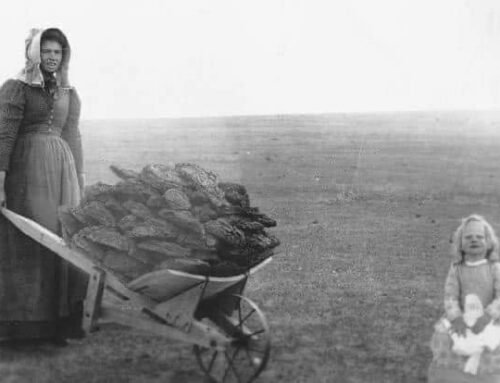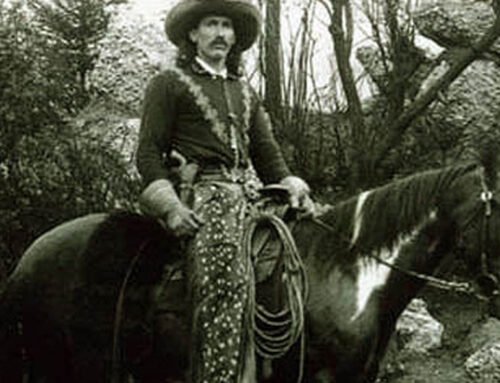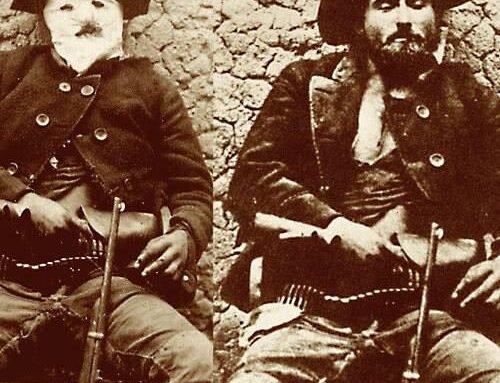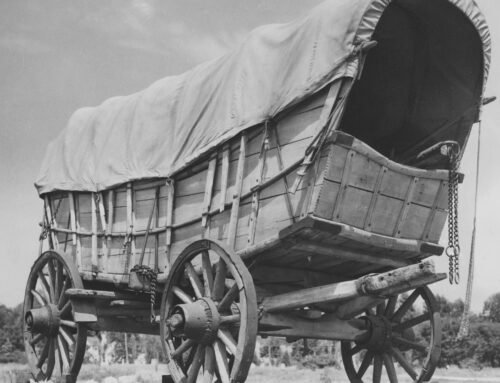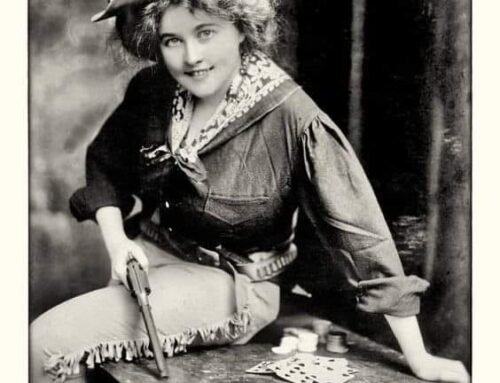‘Hanging’ Judge Isaac Parker
By western author Nick Brumby
 ‘Permit no innocent man to be punished, but let no guilty man escape.”
‘Permit no innocent man to be punished, but let no guilty man escape.”
— U.S District ‘Hanging’ Judge Isaac Parker
He brought the law to a lawless land, sentenced eight men to death by hanging, and commissioned Bass Reeves as a US Deputy Marshal.
And that was just ‘Hanging’ Judge Isaac Parker’s first day on the job.
Judge Parker was the real deal – a judge who had compassion for his fellow man but was not afraid to punish the wicked with the full weight of the law. He is remembered today as the legitimate “Hanging Judge” of the American Old West, due to the number of convicts he sentenced to death.
He served as a U.S. District Judge presiding over the U.S. District Court for the Western District of Arkansas for 21 years. Judge Parker served during the most dangerous time for law enforcement during the western expansion. It was common knowledge that Parker’s judicial district was one of — if not the — roughest in the country. Parker routinely saw vile characters pass through his court.
In 1875, Indian Territory (now Oklahoma) was populated by cattle and horse thieves, whiskey peddlers, and bandits who sought refuge in the untamed territory that was free of a “White Man’s Court.” Parker’s court, located in Fort Smith, Arkansas, had final jurisdiction over federal crimes in the Indian Territory from 1875 until 1889, as there was no court available for appeals.
The Five Civilized Tribes and other Native American tribes in the Indian Territory had jurisdiction over their own citizens through their tribal legal systems and governments. Federal law in Indian Territory applied to non-Indian United States citizens.
The Hanging Judge certainly had his work cut out for him. In his 21 years on the federal bench, he tried 13,490 cases. In more than 8,500 of these cases, the defendant either pleaded guilty or was convicted at trial. Parker sentenced 160 people to death; 79 were hanged. The other 81 either died while incarcerated, were pardoned, or had their sentences commuted.
Judge Parker was a self-made man with limited education, from a modest background. He was born on 15 October 1838 near Barnesville, Ohio, to farmers Joseph and Jane Shannon Parker. To prepare himself for a legal career, he obtained his own textbooks and studied independently. His acumen and intelligence were such that he was admitted to the Ohio bar in 1859.
 He was elected to his first bench position, judge of the Thirtieth Judicial District of Missouri, at only 30 years of age. His career took a brief diversion when in 1870, he was elected to Congress for Missouri in the first of two terms to the House of Representatives. During these two terms he notably tried (but failed) to appropriate Indian Territory as Oklahoma, arguing that the territory needed to be organized and given the law and order that a formal government could bring.
He was elected to his first bench position, judge of the Thirtieth Judicial District of Missouri, at only 30 years of age. His career took a brief diversion when in 1870, he was elected to Congress for Missouri in the first of two terms to the House of Representatives. During these two terms he notably tried (but failed) to appropriate Indian Territory as Oklahoma, arguing that the territory needed to be organized and given the law and order that a formal government could bring.
In 1874, President Ulysses S. Grant nominated Parker as Chief Justice of the Utah Territory to replace James B. McKean. However, at his own request, Parker was instead nominated to a seat on the United States District Court for the Western District of Arkansas.
 Parker arrived in Fort Smith in May 1875 and was confronted with the dire situation of a corrupt court. During Reconstruction, corruption and chaos were commonplace throughout the South. This was especially true in Fort Smith, where problems were heightened by its position on the frontier.
Parker arrived in Fort Smith in May 1875 and was confronted with the dire situation of a corrupt court. During Reconstruction, corruption and chaos were commonplace throughout the South. This was especially true in Fort Smith, where problems were heightened by its position on the frontier.
In the immediate years preceding Parker, five Marshals had been forced out of office, federal commissioners and clerks were implicated for embezzlement, and three attorneys fired. To cap it all, Parker’s predecessor, William Story, illegally handled court funds and accepted bribes.
Judge Parker had a busy start to his judicial career. His first session as the district judge started on May 10, 1875, during which he commissioned the fabled lawman Bass Reeves as a Deputy US Marshal. In that same session he found eight men guilty of murder and sentenced them to death on the gallows. Thus, the legend of the ‘Hanging Judge’ was born.
Though the hangings were an indication that the once corrupt court was functioning again, Parker’s critics called his court the “Court of the Damned.”
 Judge Parker held court six days a week, often up to ten hours each day. He tried 91 defendants on the bench in his first eight weeks. In that first summer, eighteen people came before him charged with murder, and 15 were convicted.
Judge Parker held court six days a week, often up to ten hours each day. He tried 91 defendants on the bench in his first eight weeks. In that first summer, eighteen people came before him charged with murder, and 15 were convicted.
Of the eight sentenced to die on the gallows, only six would be executed. One was killed trying to escape and a second had his sentence commuted to life in prison because of his youth.
Judge Parker’s very first case was that of Daniel Evans, who was accused of murdering his 19-year-old friend for his boots. The evidence was apparently overwhelming and in sentencing Evans to death, Parker was overcome by emotions and wept.
Within his first few months, five more men were sentenced to death. This included the horse thief James Moore, who had killed a deputy in a shootout, drunken murderer John Whittington, Sam Fooy, who robbed and murdered a teacher, Smoker Mankiller, a Native American who killed a white man, and Edmund Campbell, an African American who murdered his neighbor.
Parker ordered Evans and the other five to be hung together on September 3, 1875, a mere four months after he assumed his appointment. This public execution drew people from all over the region.
The hanging became an extraordinary media event when reporters from Little Rock, St. Louis, and Kansas City flocked to the city. Other newspapermen traveled far from eastern and northern cities to catch the scoop.
 A week before the hanging, the city began to fill with strangers from all over the country, anxious to view the hangings. On the day they were to be condemned, more than 5,000 people watched as the six men were marched from the jail to the gallows.
A week before the hanging, the city began to fill with strangers from all over the country, anxious to view the hangings. On the day they were to be condemned, more than 5,000 people watched as the six men were marched from the jail to the gallows.
The hangings went without a hitch, as a doctor pronounced each man dead as they dropped below the gallows stand.
Perhaps the most infamous criminal who came before Parker was Crawford Goldsby, also known as Cherokee Bill, who murdered at least seven men. He was hanged in 1896 after an attempted jailbreak in which he murdered a guard.
Another group of absolutely appalling outlaws was the Rufus Buck Gang who raped, murdered, and plundered through the Indian Territory in 1895. They were all hanged under Parker’s watch.
Judge Parker was no shrinking violet hiding behind his Marshals. One time in 1883, a man named Matt Music, who had been charged with raping a seven-year-old girl, was standing trial in Parker’s court. At one point, he saw a chance to escape and flung himself toward an exit.
According to reports at the time, “[Music] had cleared the guards but not Judge Parker. His honor reached out, grabbed the fleeing prisoner and sent him hurtling to the floor.”
During Judge Parker’s 21 years on the bench, several famous lawmen served as deputy marshals, including gunman Frank Canton, Zeke Proctor, Frank Eaton, Bass Reeves and Heck Thomas. As many as 109 deputy marshals were killed in the line of duty during that time frame.
Even though he was known as the Hanging Judge, Parker never took personal responsibility for these executions. In truth the Hanging Judge was against the death penalty. The law of the death penalty for capital crimes was set by Congress, so Parker was forced to carry out the law.
He once said, “I’ve never hanged a man. It is the law that has done it. I was only its instrument.”
In 1885 he said: I have in the last 10 years sentenced to prison and when I looked in the faces of these men, the impression filled my mind that not one of them, no matter how depraved, had entirely lost that better part of human nature which makes a man a good citizen, and a faint spark of which lingers in the nature of the worst and most depraved convict.”
Judge Isaac Parker died later that same year and had the largest funeral in Fort Smith’s history to that time. Another justice, F.F. Bryant eulogized that Parker “was eminently a man for the time and place and seemed providentially called to the duty he performed.”

About Nick Brumby
I like a good story. And of all stories, I love westerns the most.
As a kid, I spent far too many afternoons re-watching Clint Eastwood spaghetti westerns, picking up ‘Shane’ for just one more read, or saddling up beside Ben Cartwright when ‘Bonanza’ was on TV each afternoon.
I’m a former journalist and I love horses, dogs, and the occasional bourbon whiskey. I live with my wife, daughter and our ever-slumbering hound in a 1800’s-era gold mining town – our house is right on top of the last working gold mine in the area. There may not be much gold left, but there’s history wherever you look.
I hope you enjoy my westerns as much as I enjoyed writing them!
Happy trails,
Nick





















